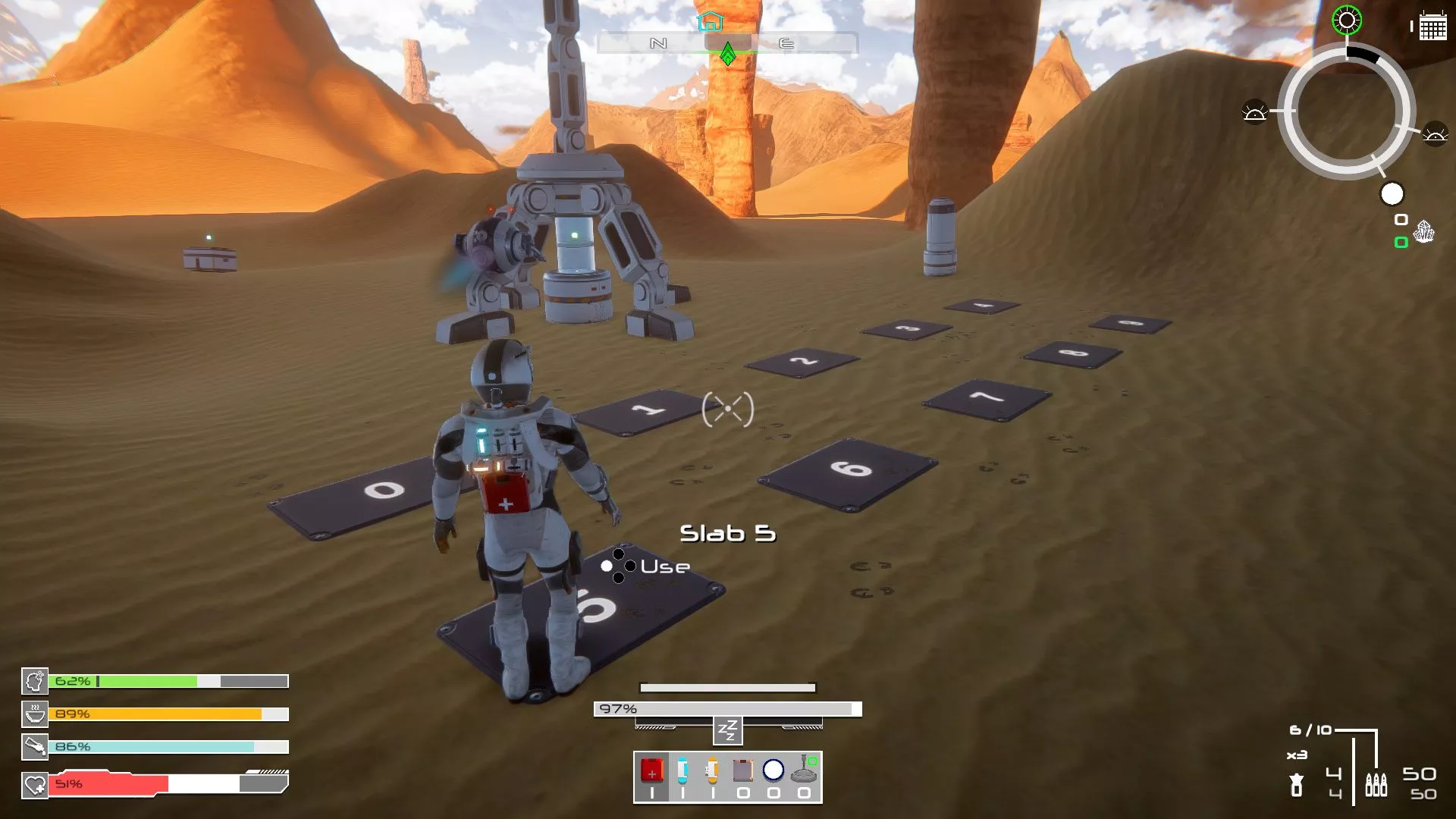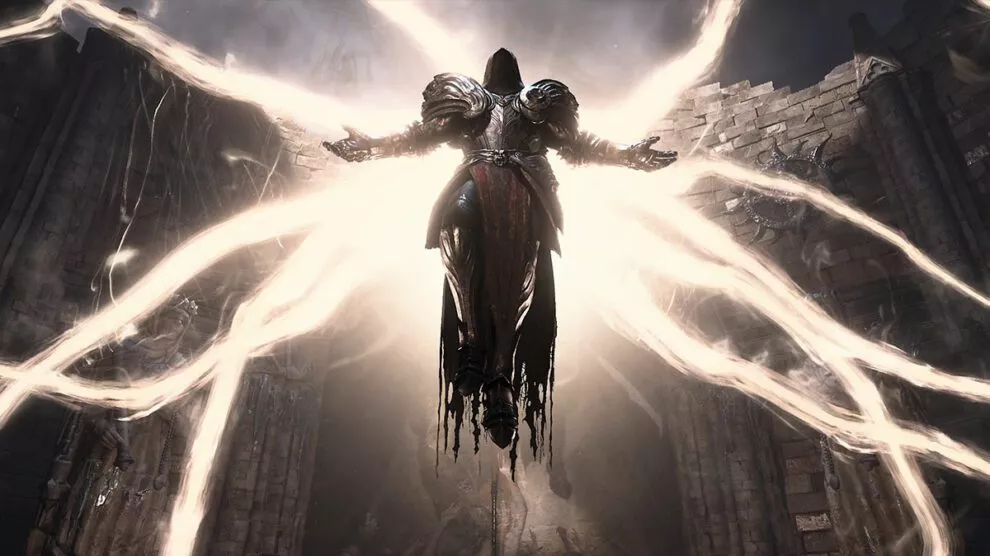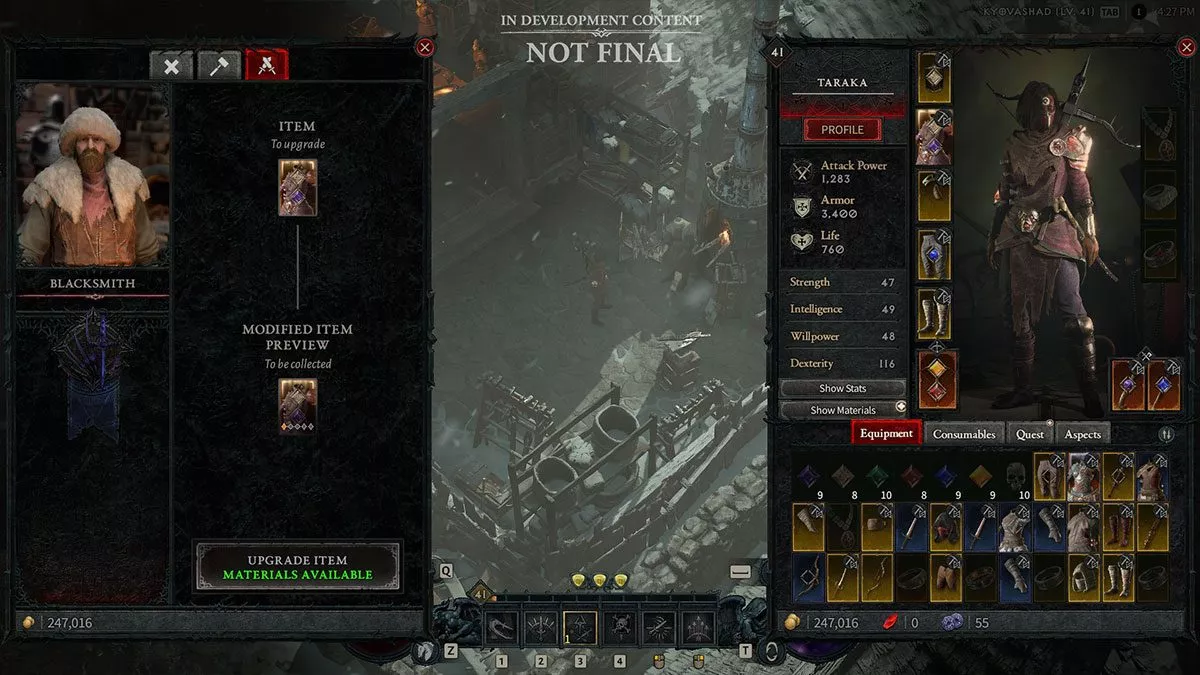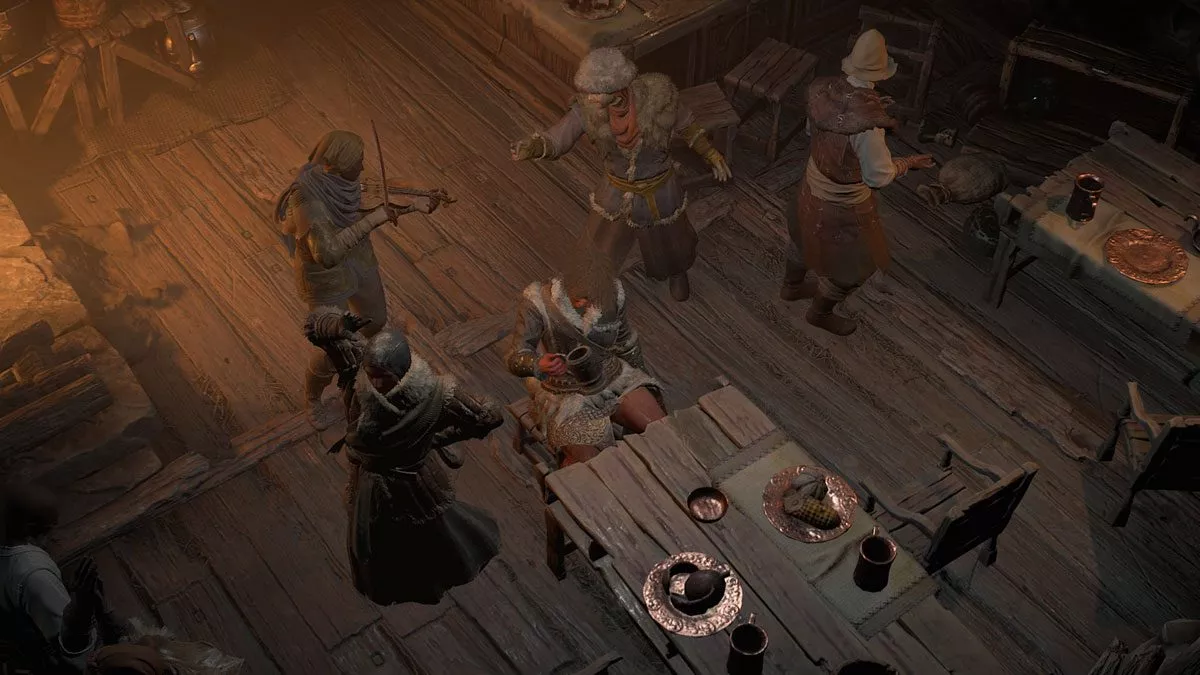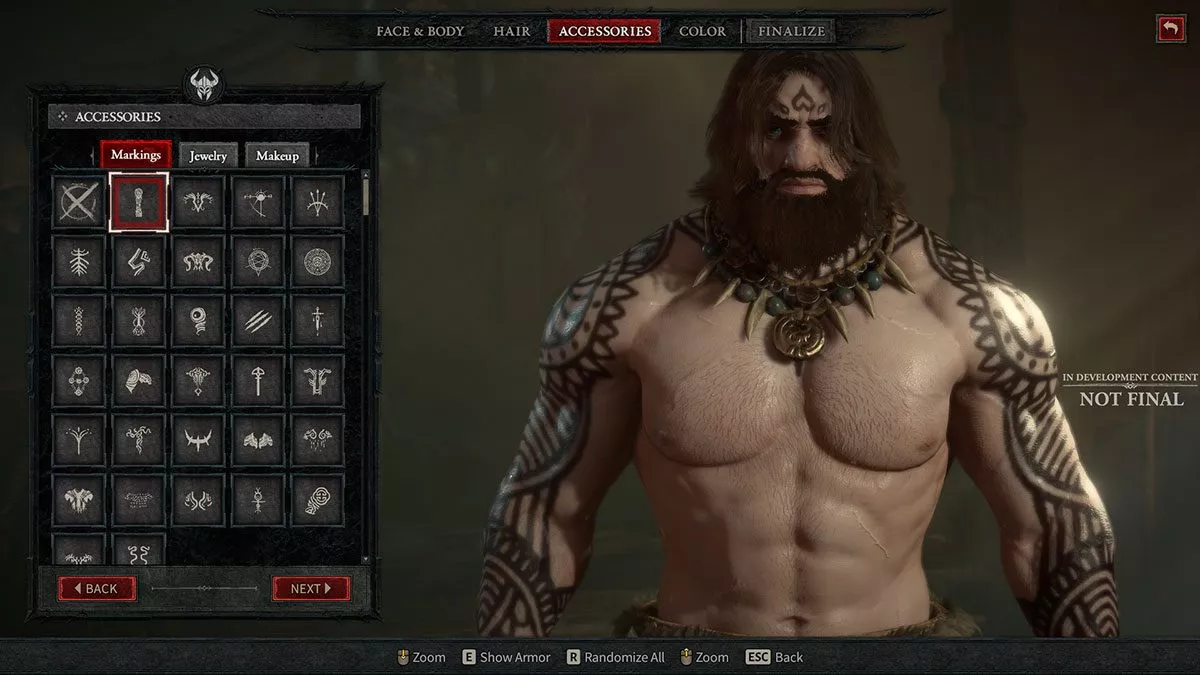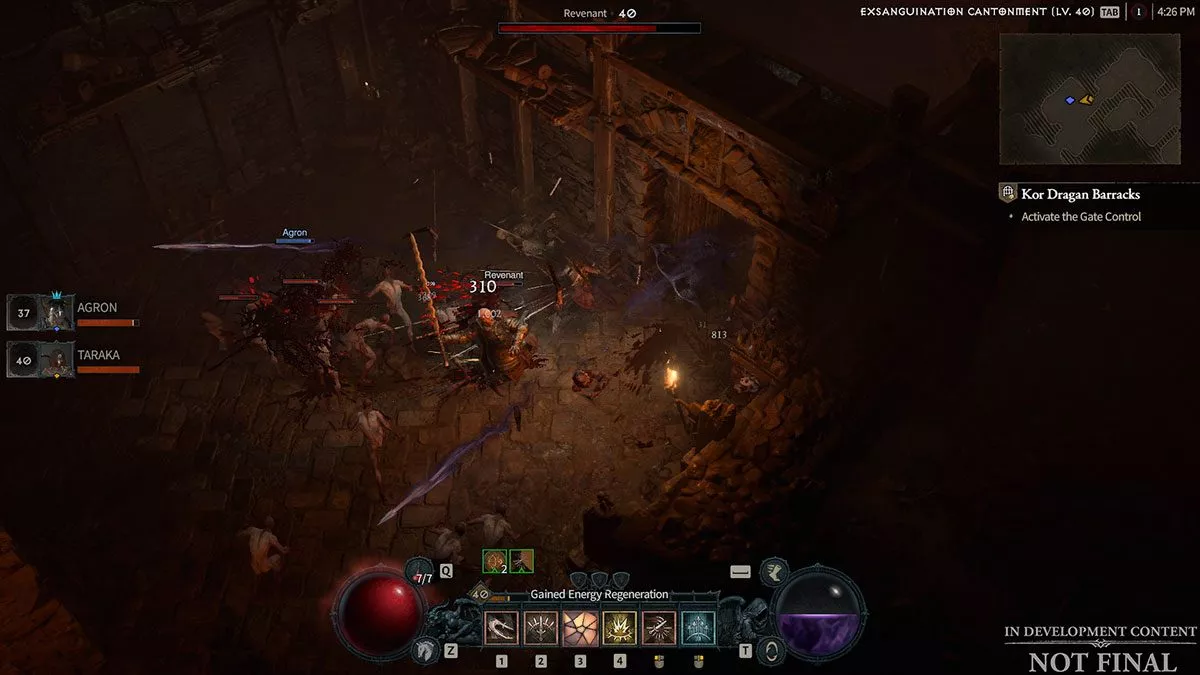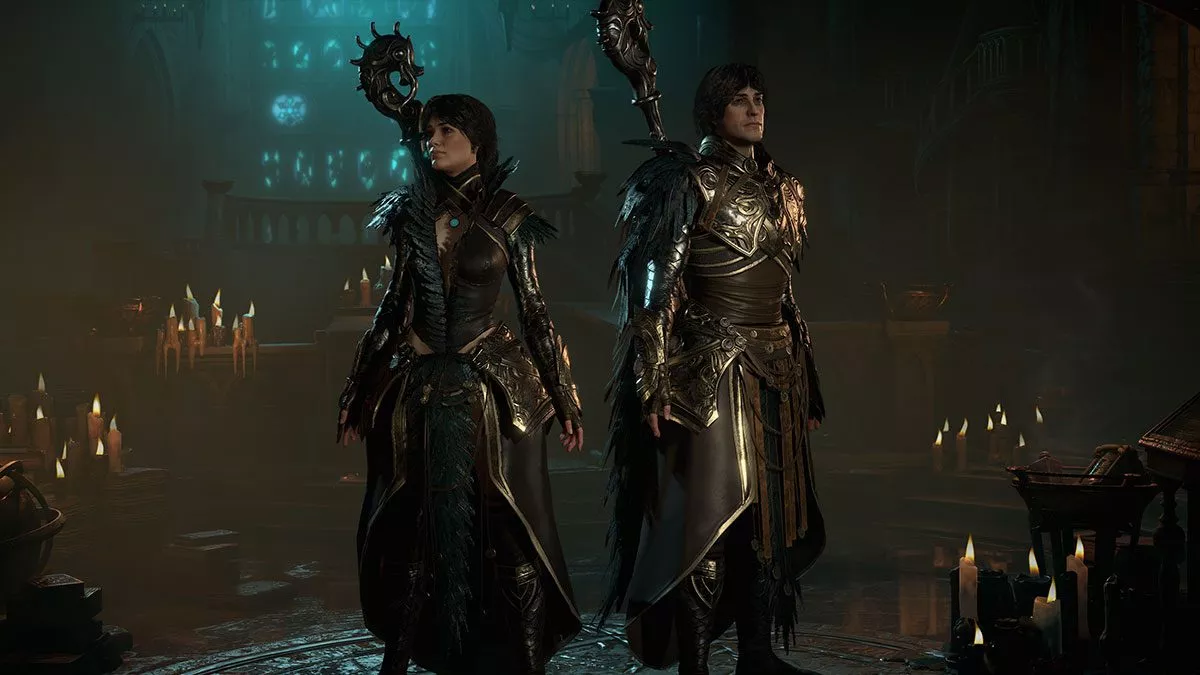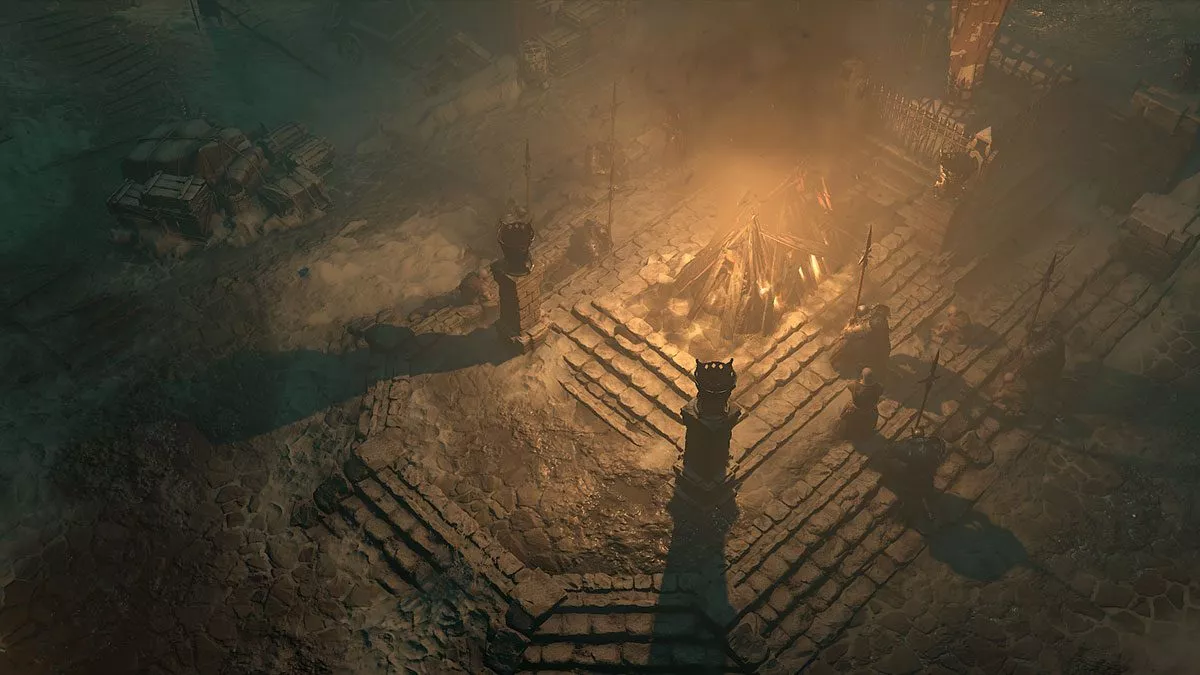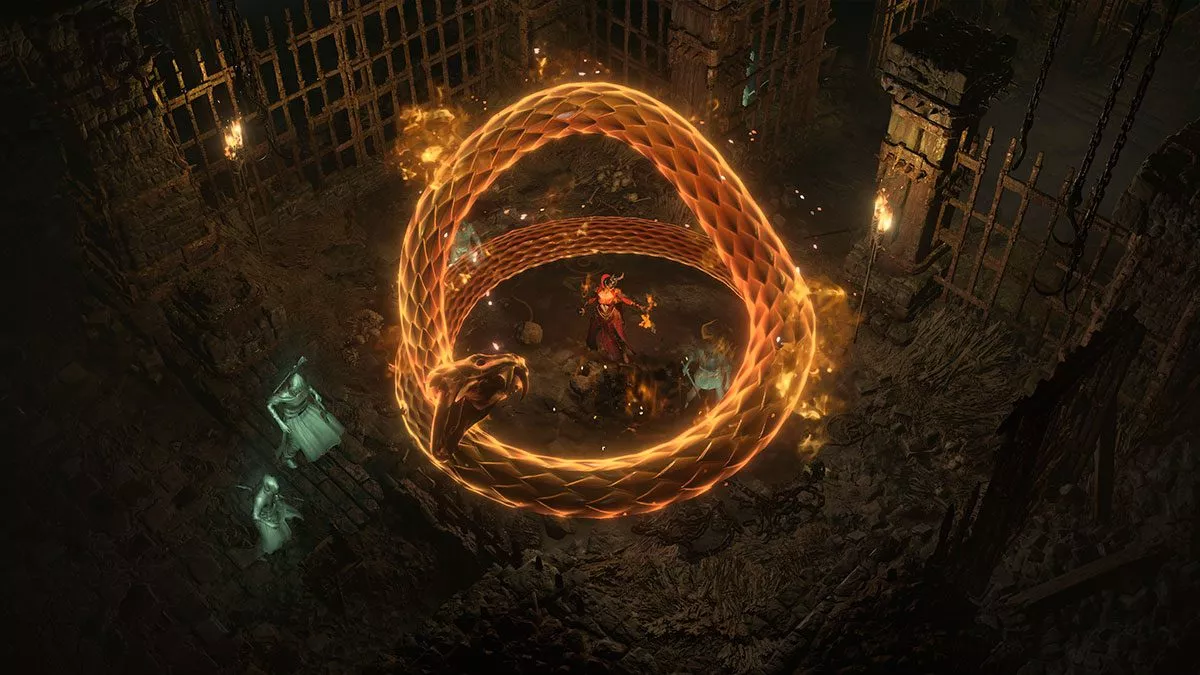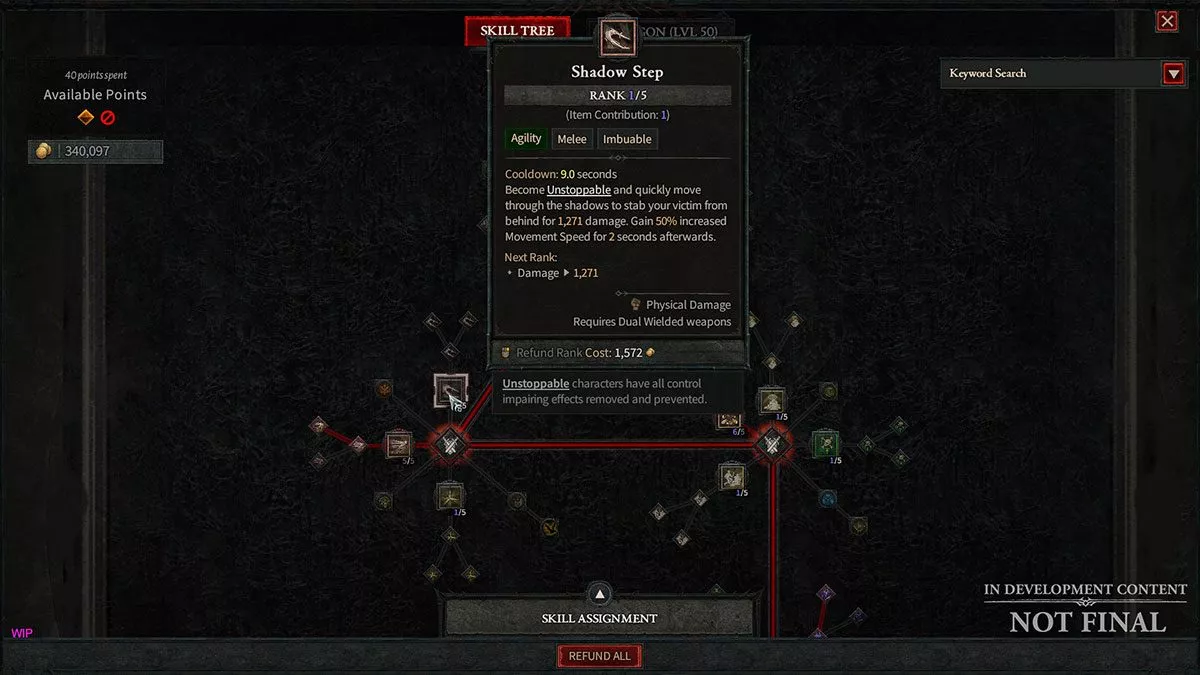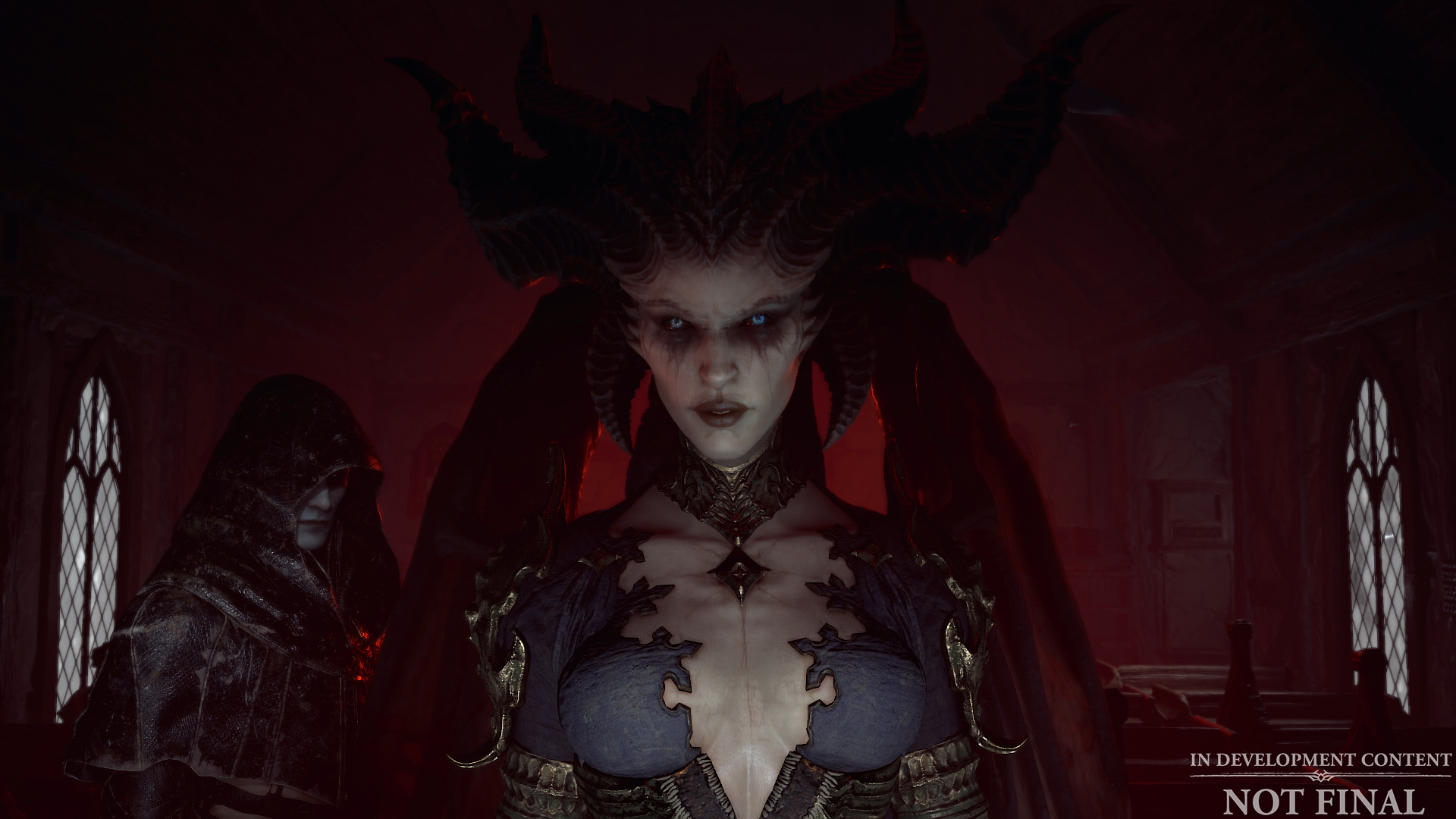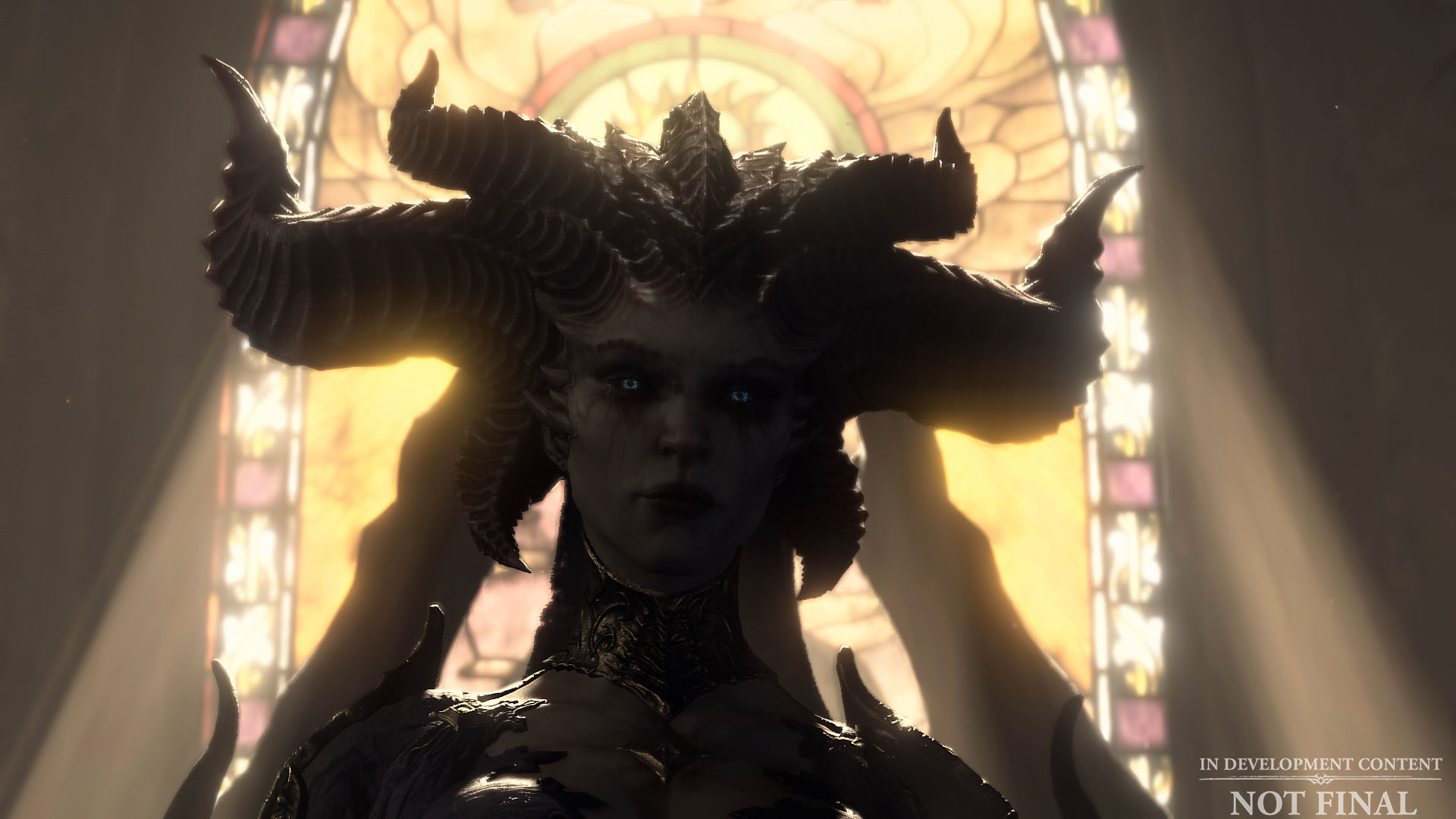Mommy and Daddy issues: The Game
It’s hard to understate how much I’ve had to temper my excitement leading up to the release of Diablo 4. While I only dabbled with Diablo 2 in my youth, Diablo 3 was my true entry point to the series. A much maligned game on release thanks to some awful decisions by its developers, D3 had an undeniable charm and one of the best redemption arcs in gaming thanks in no small part to the dearly departed Travis ‘Indalamar’ Day.
How do you even begin to follow that up? After all, D3 is over 10 years old at this point and nearly 30 seasons of free content deep. Diablo 2 is considered to be one of the best game ever by a not small, nostalgia-tinted part of the gaming community. Diablo 4 then has some hellishly big boots to fill.
Sanctuary for who?
Diablo 4 takes place in Sanctuary – a pocket dimension created by Lilith, the Daughter of Hatred, and the fallen archangel Inarius. Together they created this realm to take refuge away from the Eternal Conflict that raged on between Heaven and Hell. Good things never last though, and in time Sanctuary itself became a battlefield for the very conflict they sought to escape.
Set some 50 years after the defeat of Maltheal at the end of Diablo 3’s Reaper of Souls, the Sanctuary of Diablo 4 bears the scars of the Reaper’s wake. The world is dark and full of dangers, and what dregs of humanity still survive have been driven back into their towns and cities, struggling to survive. The zealous amongst them turn to the Cathedral of Light, Inarius’ cult-like following, while others beg, borrow, and steal in hopes of survival.
Diablo has never been a bright and happy franchise, but Diablo 4’s Sanctuary is undoubtedly the darkest the series has ever felt. Everywhere you travel people are fighting daily just to get by. It’s gritty and grimy, and it’s easy to empathise with the helpless masses who are turning to anything, demons and angels alike, just to find some semblance of hope or meaning.
The world itself reflects this gross hopelessness through a mix of decrepit structures and other wrecks of humanity strewn through the landscape. Empty prisons once fully manned by guards now lay empty save for the risen bones of its former inhabitants, with the soldiers long since fallen back to reinforce cities. Demons run amok, completely unchecked by the unmatched general populace. All of this is conveyed through an art style that skilfully blends the baroque and horrific.
It’s art, Jim
Some six months ago, in a preview session hosted by Blizzard, Diablo 4 Art Director John Mueller described their vision for the game as a dark medieval fantasy influenced by the old masters. While Diablo 2 felt very gothic in nature and Diablo 3 often felt like a painted dreamscape, Diablo 4 is a far more grounded blend of the two.
To say that this latest entry is visually spectacular is an understatement. While I came to love the art style of D3, D4’s grittier take features many of the same highs as the previous entry while somehow feeling more real, more alive. Take dungeons for example – these underground expanses are dripping with personality, be it fetid growths or nature reclaiming what humanity took from it. While yes, you will inevitably become numb to some overused tile sets, the excellence in the art style is not to be discounted.
The only real let down, visually speaking, is the overworld. While each of the four main areas of Sanctuary are visually distinct, there aren’t many highlights to be found while wandering around outside. I never really felt like these areas were alive; sure, they were full of mobs to evaporate and the occasional other adventurer making their way around, but for the most part these between zones that make up the bulk of the map don’t contribute much to the vibe.
I’ve seen that guy before
This is further exacerbated by the classic Diablo enemy design. It’s long been a feature of the series that, for the most part, the actual variation of enemies you see and fight is low. Sure, there may be four clans of the goatmen Khazra, but aside from some ability variation you’re essentially fighting the same guys in Kehjistan as you were in Scosglen and Fractured Peaks. There are some more unique foes in the swampy mire that is Hawezar, but you don’t reach there until Act 4.
The bosses found in dungeons and Strongholds become samey too, especially if you’re pumping out a few of these at once to grind some levels. In my playtime I only completed a handful of the dungeons on offer, but I think I must’ve fought the Khazra Abomination in nearly half of those. Now I’m not sure if this is bad luck or intended design, but you can bet I was sick of that guy by our third bout.
Thankfully this sameness doesn’t extend to the campaign bosses. Sure, you’ll fight some jumped up regular mobs here too, but the actual bosses are both interesting and different enough to be compelling fights. I won’t spoil too much (yet — that comes later), but let’s just say there are some familiar faces and fights littered throughout the acts.
Not all those who Wander are lost
In D1 and D2 you were just a hero. In D3, you were a Nephalem – a descendant of the offspring of angels and demons. This time around you’re just a Wanderer, a solo traveller, caught in a snowstorm and seemingly rescued by a not-at-all suspect wolf. A nobody who’s just trying to survive like everybody else in this forsaken world.
Who you are has never truly been important in the series, with more emphasis being placed on what you are: a hero. A descendent of immortal warriors. A bastion against the darkness, and a spear to pierce its heart. In this way, it made sense that the class you picked was just a face. Diablo 3 gave you a binary gender option, but that was about all the customisation you had.
Diablo 4 breaks from that mould. You’re still a nobody, chosen by fate (and that damn wolf), but how you look is up to you. Your gender is still presented on the binary, but you can choose from a handful of faces and customisation options to make your character more… you.
Classy individuals
Diablo 4 has five base classes on offer, all of whom will be at least a little familiar to veterans. Barbarians are the in-your-face brawlers while Druids offer a shapeshifting, nature commanding suite of powers. Necromancers command their armies of the dead while the adaptable Rogue is equally skilled in combat with either the bow or dagger.
For me though, it’s something of a tradition to dip into the Sorcerer (Wizard in Diablo 3) class first time through. I’ve spent hundreds of hours with Ewizabeth in her various incarnations and so it was only natural that she’d be my first Wanderer this time too.
Sorcerers in D4 have access to three main schools of magic: ice, fire and lightning. Each of these can inflict different statuses on enemies and combining them together is key to crashing through hordes of mobs and staying healthy. For me it was a reliance on Chain Lightning and Ice Nova to nuke whole groups after teleporting directly into their midst. Who said magic users were cowards?
Sorcerers also gain access to Enchantment slots – two slots that provide an additional benefit depending on which spells are chosen. While Chain Lightning is the obvious choice for my first enchantment, a single point in Fire Bolt also allowed all of my attacks to apply the Burning effect. This, combined with some tactical choices deep in the skill tree, kept me healthy through any fight and boosted my damage output to boot.
This level of build choice is something touted as a big selling point of D4. Diablo 3 had a much simpler, and much maligned, skill system while Diablo 2’s is much more reminiscent of what you can expect this time around. Gone is the simple choice to take a skill, instead you can once again put more (or less) points into an ability depending on your need. Have a main damage spell a la Chain Lightning? Pump points into that bad boy. Want Ice Armor just for its utility? One point is fine then. You can even gain extra skill levels from gear too, and these can take you past the five-point cap imposed from the regular skill tree.
It’s raining loot
Another sore point for old school Diablo fans was 3’s approach to gear. Once you reached end or post-game, the only gear that mattered was Legendary or higher. Sure, the Kanais Cube let you take a yellow item and upgrade its rarity, but in doing so the item was completely reforged – none of the stat rolls on the yellow item mattered at all.
That’s abandoned in this iteration. Instead, getting a well rolled yellow item is essential and something you’ll be hunting for throughout the end game loop. Where Legendaries were once unique items in their own right, now a Legendary is nothing more than a yellow item with some extra stats and a Legendary power.
These powers aren’t item specific either. While some of these affixes may only be available in particular slots, they can be freely applied to any piece of gear you’d like. Have a great pair of gloves? Bang your favourite affix on those bad boys. Had a Legendary drop with a garbage roll but a great power? Extract it and apply it somewhere better.
This refocusing of the way we interact with items and rarities seems like a great idea on paper, but for me it swings the pendulum too far in the other direction. Once again almost no gear matters, and the vast majority of stuff you pick up will just be trash. Adding an affix is an expensive exercise and you can’t afford to throw it on just any piece.
Ultimately there’s still going to be a best in slot stat combination for every gear piece and every build, that’s just an unavoidable quirk of loot-based games. Will the solution this time out prove good enough to empower the grind without inducing fatigue and burn out? I guess time will tell.
— Story Time! Warning heavy story spoilers follow! —
Daddy issues
As you’ve probably ascertained from the mountains of marketing material, Diablo 4 is all about Lilith. Summoned back into our world after being banished by Inarius himself, she’s set about gathering a cult of followers together to turf out Mephisto and free Sanctuary from the influence of the Eternal Conflict. Now that’s all well and good in theory but Lilith is still a demon herself. As such, her means to achieve this freeing of Sanctuary aren’t exactly humanitarian or even altogether that friendly to begin with.
The first few acts of the campaign are a slow-paced affair. Much of the time is spent setting up the back half of things up. It doesn’t help that this also coincides with the part of the game where you’re the weakest you’ll be throughout your time in Sanctuary either, leading to these early campaign acts to feel like a drag.
Once the back half of the campaign hits though things start to get genuinely interesting. A stellar series of boss fights with Lilith’s ex-Horadrim buddy Elias lead to the introduction of the Tree of Whispers. This sprawling, ancient tree boasts nearly complete knowledge of the realm, but asking a question of it comes at a cost – upon your death, your head joins the others hanging from the tree.
By now you’re in the penultimate act, and while you can sense the end is near it’s not truly clear which way things will go right up until the end. Some excellent writing from Blizzard portrays the uncertainty in the minds of your ramshackle crew. In one impressive dialogue, your Wanderer speaks at length with Neyrelle about what it means who to be a hero. What it means to be who they are. This glimpse into the psyche of our character is so important, and makes the end game make so much more sense.
We’re acutely aware of how others perceive us, but to us it’s just another day. We feel no different today than we did a year ago, and importantly it’s shown later that we know just how much influence the Lord of Hatred has likely held over us and, by extension, our comrades. Never has a Diablo story evoked such compelling story telling, and here it’s hidden in optional dialogue that most players will probably never even interact with. A real shame.
Mommy?
Eventually your journey takes you into hell, where we find the battered remnants of the Cathedrals warband. It’s hard not to feel at least a little sorry for Inarius and his followers. The rogue angel himself was trapped in Hell by the Lord of Hatred and tortured there for an untold amount of time. It was here that his doubts became shaped into hatred by his experience, and more than anything he wants to abandon sanctuary and return home to Heaven.
Contrast this against Lilith, the self-professed saviour of Sanctuary. When Inarius finally gets his big moment, he finds noting but silence from his golden brethren and destruction at the hands of his former lover. To us, Lilith makes an offer – join her and rule over the realm while she guides us from the shadows. There is however another party whose interests lay in direct opposition to hers, someone who’s been following along with us from the very beginning.
The Evil you know
Series veterans will be well acquainted with Dul’Mephistos, the Lord of Hatred. One of the three Prime Evils, Mephisto was last encountered in Diablo 2 where he was sent back to hell by our hero. Places touched by Mephisto are rank with hatred and anger, and his influence can turn even the chummiest of chums into bitter enemies in time.
Those familiar with the lore should find it to be no surprise then that the mysterious wolf that spared us from the cold night is none other than Mephisto himself. As one of the three Primes, Mephisto sees himself as a pillar of Sanctuary – someone whom the realm simply could not exist without. This also forms the backbone of his pitch to us: without me, you’ll all be gone.
Throughout the campaign, Mephisto is always aiding you in your pursuit of Lilith. He makes no attempts to hide that this is purely self-serving – he doesn’t want to die, and you’re his best shot at survival. The evil of the Primes is pervasive and unending though, and even our character acknowledges his influence over them.
This begs the question… can Mephisto be trusted? Or are we setting ourselves up for failure?
The Evil you don’t
Enter Lilith, our other alternative. Known to her followers as The Mother, Lilith is quite literally the mother of creation for those who reside in Sanctuary. Paired with the angel Inarius, she formed the very pocket dimension that our world exists in and seemingly cares deeply for us – her descendants.
Still, there’s the inescapable fact that she herself is the Daughter of Hatred, Mephisto’s own. While she claims her intentions are good, a cursory glance over the list of her followers’ “achievements” shows that her means may not justify the ends.
This is the conflict that Diablo 4 hinges on. Who do we believe? Is their truth to that Mephisto’s claim? It’s hard to say. Lilith’s plan to consume the essence of the reforming paragon of hatred would put an end to him, but it may just result in Lilith taking his place. Any reliance on either of them seems shortsighted at best, but where else can we turn?
The lesser of two evils
Diablo 4 asks, and eventually answers, a simple question. What is the lesser of two evils? Throughout all 6 acts of the campaign, we’re shown that while Lilith may speak of good intentions and saving her creation, her methods to do so are as destructive as that of the Primes. To her, the strong are all that deserve to survive.
For our Hero though that’s not a valid option. What then of Mephisto? His pitch is to preserve the status quo. Sure, things may be very, very, very bad in Sanctuary right now but Lilith’s future is the unknown one. Not a convincing sell for sure, but what if there was a third option?
This is the path we eventually choose – attempt to take it all and leave nothing for the demons playing with humanity. With Neyrelle’s help, Mephisto is sealed inside the Soul Stone intended for Lilith and we’re left to take out the lady herself. While this may come as a surprise to those coasting through the campaign and ignoring the optional dialogues, this is really the only option we had. Lilith’s influence is just as poisonous for humanity as her fathers, and so we must fight.
The fight itself is unfortunately not the most memorable. Hell itself is somewhat of a boss rush, but feels like more of a boss slog. While the ascension of the high heavens to fight Diablo in 3 was an epic journey on a golden backdrop, this is just a slow and dingey push towards the ending.
Lilith herself pales in comparison to the exceptionally memorable Diablo fight, being a relatively standard affair and a disappointing finish to an enjoyable ride. Couple this with a story ending that suffers heavily from the need to setup a seasonal model and we’re left with an excellent campaign that unfortunately whimpers out.
Journeys end?
It’s a real shame that Diablo 4 has been so heavily catered towards the classic seasonal monetisation model. While we weren’t exposed to the shop, microtransactions or any of the seasonal stuff in our review builds, we did experience the sacrifices made through the story to set this up. While a game like Diablo doesn’t ever really end (Diablo 3 is only “ending” because of this release), the need to stretch a story out and leave threads lying around denies the campaign its final punch.
Luckily all of the other aspects of the game come together to make up for this disappointment. Blasting through huge packs of mobs will never not tickle me, and the capstone dungeons show that Blizzard is committed to making Diablo an experience that is equally challenging and enjoyable.
Overall Diablo 4 has far exceeded expectations. I was worried that the game design would fall too far in the direction of the exceedingly overrated Diablo 2 (yeah I said it, nostalgia is a helluva drug) but the team have blended it well with the much maligned Diablo 3. While a disgusting monetisation model could put a damper on things, at this stage the game gets my wholehearted recommendation.
Diablo 4 is the triumph an embattled Blizzard needs to steady its ship, and it’s a hell of a lot of fun.
Diablo 4 was reviewed using promotional codes on PC (scored review) and PS5 (beginner’s perspective), as provided by the publisher. Click here to learn more about Stevivor’s scoring scale.
This article may contain affiliate links, meaning we could earn a small commission if you click-through and make a purchase. Stevivor is an independent outlet and our journalism is in no way influenced by any advertiser or commercial initiative.





